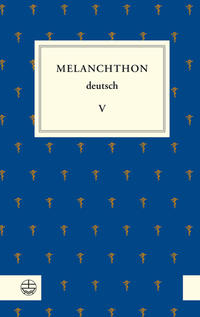
Mit dem Brief des Paulus an die Römer hat sich Melanchthon sein Leben lang beschäftigt. Eine Einleitung zu einer Vorlesung stammt bereits aus dem Jahr 1519. Ihr folgten 1520 eine lateinische Textausgabe mit theologischer Einleitung sowie eine Rede über die Lehre des Paulus. 1522 erschien Melanchthons erster Römerbriefkommentar mit Luthers Vorrede in Nürnberg. Dieser hatte das Manuskript ohne Wissen und sehr zum Unwillen des Autors heimlich in den Druck gegeben. Melanchthons frühe Römerbriefauslegung, die erstmals in moderner deutscher Übersetzung präsentiert wird, belegt seine enge theologische Verbindung mit Luther und gehört unmittelbar zur Entstehungsgeschichte seiner Loci communes theologici von 1521. Zwei weitere Arbeiten von 1529 und 1532 zeigen Kontinuität und Weiterentwicklung von Melanchthons rhetorischer Auslegungspraxis. [Melanchthon German V. Melanchthon's Early Interpretations of the Letter to the Romans] Melanchthon spent his entire life preoccupied with Paul's Letter to the Romans. An introduction to a lecture dates as far back as 1519, followed in 1520 by a Latin text edition with a theological introduction and a speech on Paul's teachings. In 1522, Melanchthon's first commentary on the letter to the Romans with Luther's preface appeared in Nuremberg. The latter had secretly passed the manuscript on to the press without the author's knowledge and much to his displeasure. Melanchthon's early interpretation of the Letter to the Romans, which is presented for the first time in a modern German translation, proves his close theological connection with Luther and directly belongs to the genesis of his Loci communes theologici of 1521. Two further works from 1529 and 1532 show the continuity and further development of Melanchthon's rhetorical interpretation practice.